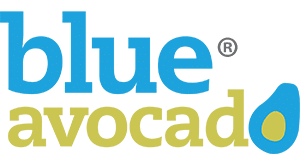When the System Fails Quietly: What I’ve Learned from Sitting Between the Frontline and the Data
Leadership, especially in the nonprofit sector, means you’re not standing at the top — but spotting gaps, shining a light, and quietly stitching trust back together where it’s needed.

Effective nonprofit leadership is learning to spot and prevent “quiet failure” — the breakdown that doesn’t make noise but can erode everything underneath.
I’ve sat in a lot of different chairs over nearly 30 years — small-business owner, nonprofit leader, systems guy, DJ (yes, really), and most recently, the person who makes sure over 100 million pounds of food move through New Jersey every year.
But the most complicated seat I’ve ever held?
The one in between.
Between program and development. Between frontline delivery and CRM dashboards. Between people trying to serve and systems trying to keep up.
When things go wrong, they’re easy to spot. When they go almost right, that’s when it gets dangerous.
The Failure You Don’t See Coming
Everyone’s had their “crash” moments. A database that freezes. A shipment that misses the dock. A report that’s wrong the night before a board meeting.
But what I’ve learned to watch for is the quiet failure. The breakdown that doesn’t make noise — but erodes everything underneath.
It’s the client call that doesn’t get logged.
The pantry visit that never gets recorded.
The donor follow-up that never happens because the note was buried in someone’s email.
It’s the fundraiser who doesn’t trust the program data. The analyst who doesn’t know what the field team is going through. The grant writer waiting three weeks for a number that lives in someone’s head.
No big explosions. Just silence.
Until trust slips — and no one knows why.
Leadership Lives in the In-Between
I lead fulfillment at a major food bank. It’s fast, physical work. But I also co-lead our CRM and ERP transformation — building out a system that (hopefully) makes our work smarter and more connected.
And that’s what I’ve come to believe: Leadership lives in the friction. Not the finish line.
When a system “kind of” works, people stop raising their hands. They stop offering better ideas. They just adapt. And that adaptation becomes silence.
That’s why my job — more than anything — is about making the quiet things loud.
Fundraising Isn’t Broken. It’s Blinded.
One of the biggest mistakes I see in the nonprofit world is treating fundraising like a standalone effort. It’s not.
Fundraising lives downstream from fulfillment, from operations, from the way your organization delivers its promises.
And when you’re sitting at the intersection of systems and story, you start to see the disconnects:
- Development doesn’t know if the pantry actually received the delivery.
- Programs don’t know who’s supposed to report what.
- Finance wants answers that nobody has cleanly.
But the donor? They don’t care who’s at fault. They care whether they can trust you.
What I’ve Learned About Trust (and Teams)
Here’s what I’ve had to learn — and sometimes re-learn — about trust as a leader:
- Silence is not success.
If nobody’s raising red flags, it doesn’t mean the system works. It might mean they’ve stopped believing it can. - Reports don’t build culture. Stories do.
If you want your team to care about a system, connect it to the real people they’re serving. “CRM” is just a term. “Mrs. Johnson got food last Tuesday” is a reason to care. - Middle people matter.
The folks who live between departments — those hybrid roles that don’t fit cleanly in a box — they’re your antennas. Listen to them. They see the edges no one else does. - Consistency beats innovation.
Fancy doesn’t fix broken. A reliable spreadsheet that gets updated on time is more powerful than a sleek tool no one uses right. - Fixing the system starts with naming what’s not working.
Out loud. Without shame. Without blaming the person who’s been duct-taping things together for three years.
Final Thought
Most days, I’m not thinking about “vision.” I’m thinking about trucks that need to roll. Teams that need direction. Systems that need to remember what they were built to support.
But on the best days? I get to help someone see the full picture again.
Not just what they’re doing — but what they’re part of. The donor. The client. The team member who finally sees their data show up in a board report.
I think that’s what leadership is, especially in this sector. Not standing at the top — but walking through the gaps, shining a light, and quietly stitching the trust back together.
You might also like:
- When the Board Becomes the Problem: Reclaiming Power in Nonprofit Leadership
- Why Human-Centered AI Adoption Matters for Nonprofits
- The New Sheriff in Town: Tips for Successfully Leading a Nonprofit Team (that Someone Else Built)
- A Board Member “Contract”
- Don’t Call it a Crisis Plan: How Nonprofits Can Proactively Plan for Turbulent Times
You made it to the end! Please share this article!
Let’s help other nonprofit leaders succeed! Consider sharing this article with your friends and colleagues via email or social media.
About the Author
Marcus Ippolito is Senior Director of Fulfillment at the Community FoodBank of New Jersey, where he co-leads a CRM and ERP transformation designed to bring clarity, coordination, and community insight to scale. With nearly 30 years of cross-sector leadership experience — spanning nonprofits, business ownership, and systems strategy — Marcus brings a grounded, adaptable lens to solving complex organizational challenges.
He’s successfully led CRM initiatives that bridge data and mission, aligning teams and technology around impact. Before his work in food banking and systems implementation, Marcus owned a baseball training facility and a thriving DJ and event company — experiences that taught him how to read a room, build momentum, and keep operations in rhythm.
Articles on Blue Avocado do not provide legal representation or legal advice and should not be used as a substitute for advice or legal counsel. Blue Avocado provides space for the nonprofit sector to express new ideas. The opinions and views expressed in this article are solely those of the authors. They do not purport to reflect or imply the opinions or views of Blue Avocado, its publisher, or affiliated organizations. Blue Avocado, its publisher, and affiliated organizations are not liable for website visitors’ use of the content on Blue Avocado nor for visitors’ decisions about using the Blue Avocado website.








I’ve read a lot of Blue Avocado articles. This is one of the most insightful and wise I’ve ever read. Don’t just read this article. Study it and implement it.